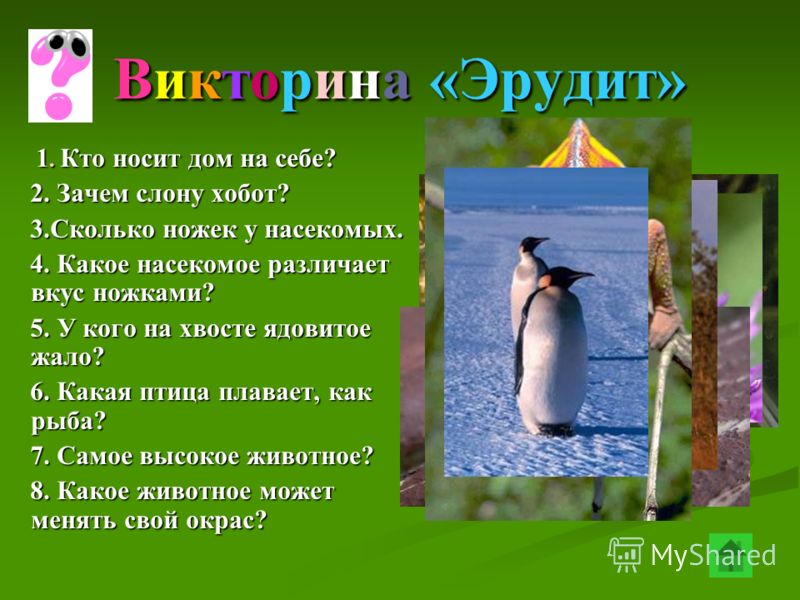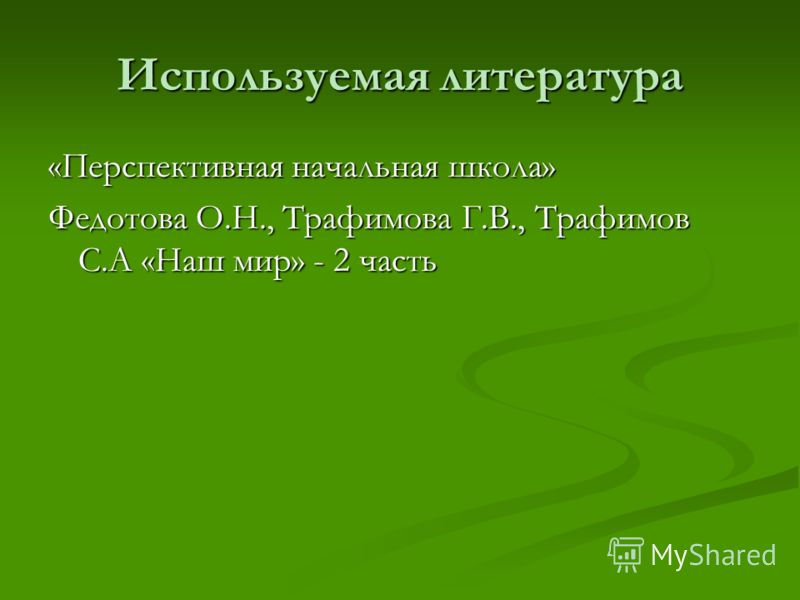"Lesson wild and domestic animals" - A man from ancient times began to tame and still tames animals. Do we have anything in common with animals? Click the "Personal" tab. Interface. Conversation about animals. Task number 1 for the classification of animals (children perform independently, check with the teacher). What do you think is the name of the process of domestication of human animals (domestication).
"Wild Animals and Domestic" - Exercise mental capacity children. Topic: Comparison of wild and domestic animals. VI. II. Objectives: Clarify with children the signs of pets. I eat honey, that's what! MOU Vladimirovskaya secondary school. Course of the lesson: Develop speech, attention, observation, memory, thinking, artistic abilities.
"Wild and Domestic Animals" - Organizing time. The teacher names the adult animal, and the children name the cubs. Equipment: Drawings depicting wild and domestic animals. What other groups can all animals be divided into? Who has horns longer than a tail? How did pets appear? Puzzles. Today we are going to talk about pets.
"The meaning of wild animals" - Red-throated goose. Protect the environment! Passenger pigeon. Importance of animals in nature. Steller's cow. Quagga. Saiga. Weird Caucasus. Importance of animals to humans. Caucasian tour. Entrance to the reserve. Natural history. Disappeared from the face of the earth. Red Book of Stavropol. Dressing. Swan mute. Lynx.
"Domestic and wild animals" - Elk. Horse. Bear. Chicken. Lamb. Elephant. What does a person get from pets? Fox in winter. Sheep. Dog. Bear in winter. Bear in summer. Wild animals. Pig. How do animals adapt to difficult environmental conditions? Animals are called wild because: Kitten. Theme: Wild and Domestic Animals.
"Who are the animals" - Z o o p a r k. To begin with, it is enough for you to get acquainted with four large groups of animals. Which animal is the beast? Legs. Head. Expanding students' knowledge about animals. Raising a caring attitude towards animals. Who else is left? Conversation between the Ant and the Turtle. You can't jump over the barrier. How many groups can animals be divided into?
Total in the topic 31 presentations
lizard family
Lizards, despite the similarity with anteaters in body shape and lifestyle, constitute a completely separate detachment *.
* The name "lizards" does not look very good, since extinct reptiles are usually called this way. The second name of the representatives of the order "pangolins", from the Malay word "pengolin" folding into a ball.
The body of all animals belonging to the order is covered on the outside with large plate-like horny scales that overlap each other like tiles, or, better, like the scales of a spruce cone. This cover, the most important distinguishing feature, is something of a unique kind, it can be compared with the scales of a fish or a reptile rather than with any other cutaneous formation of a mammal **
* * The scales of lizards can rather be compared with nail plates growing from the deep layers of the skin. Figuratively speaking, this is "sticky hair" consisting of keratin.
A more accurate description of the lizards can be the following. The body is elongated, the tail is long; the head is small, the muzzle is conically pointed; the front and hind legs are short, five-fingered and armed with very large claws used for digging. Only on the throat, underside of the body and inside the legs are hairy, while the rest of the body is armored. All the scales, which sit at one end in the skin of the body, are diamond-shaped, have very sharp edges, and, moreover, are unusually hard and dense. This arrangement makes possible a fairly large mobility of the scales in all directions; they can move to the side, rise or fall. Between individual scales and in free places of the body are Thin hair, which are sometimes completely erased on the belly. The muzzle is without scales, but is covered with hard, horn-like skin. The jaws are devoid of teeth.
* * * The role of the teeth is performed by horny jagged plates in the back of the stomach, at the exit to the intestines.
3422 The ribs are wide, their cartilages ossify almost completely with age; the sternum is also broad. A special muscle, which lies, like a hedgehog, under the skin and stretches on both sides of the spinal column, rolls the body into a ball. The tongue is rather long and protractile, extremely large salivary glands, which extend down almost to the sternum, supply the mucus needed to keep the prey stuck to the tongue; food consists of insects and mainly of ants and termites.
Most of Africa and all of southern Asia, as well as some of the adjacent islands, form the homeland of these strange animals; steppes and wooded areas, both in the mountains and on the plains, are their habitat. They probably live in burrows dug by themselves one by one, as they are not sociable, hide during the day, roam at night *.
* Most pangolins are forest animals. Medium-sized species with a long grasping tail find refuge not in holes, but in hollows. Burrows of large pangolins can reach a depth of 3-6 m and a length of up to 40 m.
In Kordofan I found burrows of lizards in a large number, but I managed to get only one of them. Most of the holes were uninhabited, so it can be assumed that lizards, like anteaters and armadillos, dig new holes for themselves when the day comes, if it is too far and inconvenient for them to return to the old ones. Captive lizards have been observed to sleep during the day, curled up and tucking their heads under their tails. With the onset of dusk, they wake up and wander, looking for food. Their movements are not at all as slow and sluggish as previously thought.
Of one species, a giant lizard (Manis gigantea), observed in western Africa, in Liberia, Buttikofer says: "This animal, contrary to the information reported in zoology, runs very fast, so that a person can hardly catch up with it, and during the flight always rises on its hind legs and tail to look around, and hangs its front legs **
* * Pangolins move on the ground, mainly relying on their hind plantigrade legs. Forelimbs with curved claws, they only slightly push off the ground. Despite the actual "two-legged" movement, the body of the lizard is located horizontally, as it is perfectly balanced by a long, heavy tail.
Since the animal can neither curl up nor turn in the burrow, the burrow has a separate entrance and exit. In addition, our fellow professional confirms the fact that two other African species: long-tailed lizard(Munis tetradactyla) and white-bellied pangolin(M. tricuspis) also run well, and, moreover, deftly climb trees.
The only sounds heard from lizards consisted of squeaks, squeaks, or snorts. Vision and hearing, apparently, are very poorly developed in them, and the sense of smell is not particularly good, although the animal is guided by this sense during its hunt ***.
* * * The sense of smell in pangolins is well developed, some species have anal glands that produce a strong-smelling secret and communicate using scent marks.
All that is known about reproduction is that the female gives birth to only one cub in her hole, which is about 30 cm long and already covered with scales at birth; however, the scales are soft and poorly developed near the end of the muzzle. However, Svaino received a family consisting of both parents and three cubs; this shows how little importance should be attached to the old indications, and how little the breeding history of these remarkable animals has yet been observed.
* The female brings one, rarely two cubs, covered with soft scales, hardening on the second day. The newborn has a length of about 30 cm. large species the cub spends the first time in a hole, in small ones it travels on the mother's tail, holding on to the scales with claws and a tenacious tail.
Lizards with proper care can endure captivity for a long time. They get used to milk, bread and even grains quite easily, although insects remain their favorite food. The natives eat lizard meat and find it tasty; shell is used by some tribes to decorate various utensils; scales are considered among various peoples of inner Africa as a magical remedy or talisman, and among the Chinese they are used in medical art for all kinds of charlatanism. In places, residents complain about the harm that lizards bring by undermining useful plants; but in general, these harmless creatures, eating ants and termites, render only a service to man.
Long-tailed or four-fingered lizard(Mams tetradactyla), 1-1.3 meters long, two thirds of which fall on the tail. In younger animals, the tail is twice as long as the body and shortens only later, as the body grows. The body is of moderate thickness, strongly retracted and gradually passes from one side into a rather short neck and head, on the other in the tail. The nose protrudes forward, the mouth opening is small, the upper jaw protrudes above the lower, the eyes are small and weak; the ears are barely visible from the outside, since only a fold of skin is visible in place of the auricle. The legs are short, thick and nearly equal in length, their toes not quite mobile. The claws of the front legs, which are used for digging, are much larger than the claws of the hind legs. The soles of the feet are thick, calloused and bare, on the hind legs they are curved downwards, so that when walking the claws barely touch the ground. Long and wide, somewhat flattened tail, starting at the base, gradually tapering towards the end. Scales cover, with the exception of the lower part of the outer side of the forelegs, the entire upper and outer side of the body, and on the tail - the underside; places devoid of scales are covered with stiff bristles. The face and throat are almost bare. Extremely strong, sharp scales of the largest size are located in the middle of the back and form on the head, sides, legs, at the end of the tail, on the sacrum and on the back, eleven longitudinal stripes, between which there are no bristles. Quite long deep grooves run along the surface of the scales, starting from the base of the body. On the back, the scales are flat, on the edge of the tail they look like tiles, on the sides they have the shape of a lancet. Two particularly large scales lie behind the shoulders. Usually the middle row on the upper part of the body consists of nine scales on the head, fourteen scales on the body and 42-A4 scales on the tail. Their general color is blackish-brown with a reddish tint; separate scales at the base are black-brown and bordered at the edges with a yellowish border. Bristly black hair.
Long-tailed, or four-fingered, lizard (Mam "s tetradactyla)
The birthplace of the animal is West Africa. Demarche gave the first detailed information about the lifestyle of this animal: “In Guinea in the forests of 3428 the Lizard family there is a four-legged animal, which the Negroes call “quaggelo”. It is covered from the neck to the end of the tail with scales that are almost the same shape as artichoke leaves, only somewhat sharper. They overlap closely and are thick and hard enough to protect the animal from the claws and teeth of other animals that attack the leopards pursue him constantly, and it is not difficult for them to catch up with the animal, for it runs much more quietly than they. It runs away, but soon overtakes it. And neither claws nor mouth can serve it as a weapon against the terrible claws and teeth of these predators; they prick him as soon as they touch him with a stronger paw, and are forced to leave him alone.Negroes kill him with sticks, skin him, sell the skin to whites and eat meat. It is very white and tender, which I readily believe, if it is true that the animal eats only ants, probably tender and tasty food! In its muzzle, which can be compared to a duck's beak, lies a very long sticky tongue, which the animal sticks into the hole of anthills or places in their path; ants immediately run to him, attracted by the smell, and stick. When the animal notices that its tongue is covered with insects, it retracts it and eats the prey. It is not vicious, it does not attack anyone, and if it finds ants, then it is satisfied, and lives a full life!" Buttikofer, who observed these animals in Liberia, says of them: "The lizards climb very dexterously and quickly, they are often found sleeping, curled up in a ball, in the forks of branches or in tree hollows. I kept one animal alive for a while; we fed it with larvae from the mushroom-like structures of termites, which for this purpose were brought from the forest and smashed. It climbed with the greatest agility up the walls to the very roof and examined it, looking for insects, especially pesky house termites.
Pangolin, Chinese lizard(Manis pentadactyla)*, has a short tail, and the outer side of its legs is covered with a shell.
* Brem mixes two close Asian species leading a semi-woody lifestyle - pangolin, or Chinese lizard (M. pentadactyla), living in southern China, Indochina and Assam, and Indian lizard (M. crassicaudata), common in Hindustan and on about. Sri Lanka (Ceylon).
The animal inhabits Hindustan and Ceylon, according to Zherdon, most readily hilly areas, but nowhere is found in large numbers. Elian already mentions that in India there is an animal that looks like an earthly crocodile. The growth of a small dog, his skin is covered with such a dense and rough bark that the removed is used as a file and even takes copper and iron. The Indians gave him the name "fatagen".
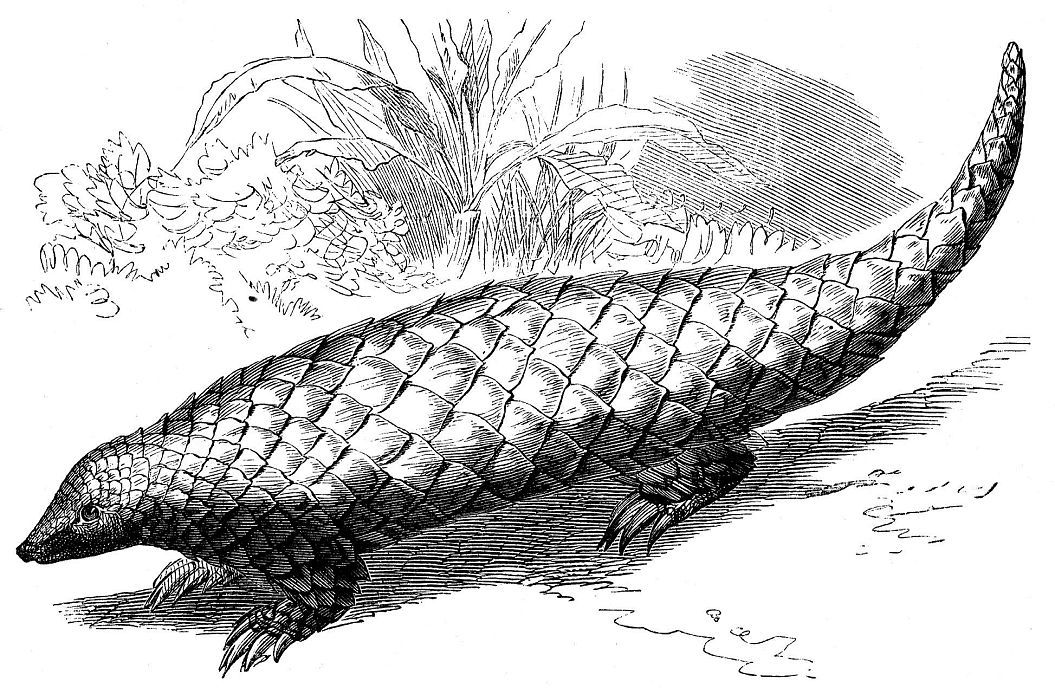
From other pangolins, with the exception of the steppe pangolin, the pangolin differs in size and in that its scales are arranged in 11-13 rows, are very wide on the back and tail and have no keel anywhere; tail at the root of the same thickness as the body, that is, not separated from it. An adult male can reach a length of 1.3 meters, about half falls on the body. The scales of the body at the end are twice as wide as their length, and are somewhat curved towards the end, their surface from the end to more than half the length of the body is smooth; they are located in 11, sometimes in 13 longitudinal rows, and two more smaller rows are added on the sides. The middle row consists of 11 scales on the head, 16 on the back and tail. The length of the tongue is about 30 cm.
We also know little about the lifestyle of this species. “This animal,” says Elliot, “pulls out passages in an inclined position from the surface of the earth to a depth of 2-L meters and opens into a large chamber, which can be more than 0.5 meters in diameter. They live in pairs, from January to March they can be found here with 1-2 cubs. kept in captivity, slept during the day and was vigorous all night. She did not want to eat either termites or ants, which I brought into the cage, although her droppings showed that she had eaten them before. The female, on the contrary, came up to the supplied water immediately and began to drink, and so quickly dipped and stretched her long, mobile tongue that the water was covered with foam. When I received her, she squeaked or snorted if she was disturbed. " Mac Master also points out that the animals he observed were always sleepy during the day and only at night became restless and greedily drank water. Their meat, according to Zherdon, is considered by the natives as an aphrodisiac. Burt says that the pangolin eats only ants and exterminates a lot of them, but it can also starve for two months; wanders at night, and is very restless in captivity; can move quite quickly, and if attacked, calmly allows himself to be picked up by the tail, without making the slightest attempt to defend himself. The Chinese make shells out of his skin and nail it to shields.
Tennent speaks only briefly about the pangolin: “The only species of non-toothed animals found in Ceylon is the armored anteater, called caballaya by the Singhalese, pangolin by the Malays; the animal is able to curl up, bending its head to its chest and wrapping its tail around its head and neck, which protects itself from enemy attacks. that these animals live here in pairs and give birth to two or three young every year. I have kept two specimens alive at different times. One of them was taken near Kandy and was about 60 cm long; it was a sweet and loyal creature, which, after walking and hunting in the house for ants, called my attention to its needs, climbing onto my knees, where it was very dexterously held by means of a tenacious tail. Another, which was caught in the jungle near Chillawa, was twice as large, but less handsome. Both were very clever at catching ants with their round and slimy tongues. During the day they were calm and quiet, but became livelier at night."
"The Chinese and Indians," Tennent notes further, "rank the pangolin among the fish. In India, the common people call this animal the fish of the jungle." In one essay on natural history In China, it is written: "Lung-Le, or the carp that lives on the hills, is called so because it is similar in body shape and appearance to a carp; since it lives on land in holes and cracks in the rocks on the hills, it has received this name. Some also call it "dragon carp", since its scales are similar to dragon scales. " Adams, from whose reports the latest data seems to have been taken, mentions that the Chinese say that the pangolin sets dangerous traps for various insects, and especially flies; to do this, he lifts the scales and waits until a certain number of insects are gathered between them, attracted by his evaporation, then, quickly folding the scales of the shell, kills all the flies and eats them *. The pangolin is often seen in the homes of the Chinese, who consider it an attractive animal, use the scales as a medicine, but do not eat its juicy meat.
At steppe lizard(Manis temminch) The tail is relatively short, broad, more or less rounded at the end. It was found by the traveler Smith and described with great accuracy in materials for the study of animals of southern Africa. In size and appearance, this lizard is most similar to its Indian cousin. The tail, which almost reaches the length of the body, thins only towards the end, where it suddenly ends in a rounded and truncated end. The body is wide, the head is short and thick. Egg-shaped scales cover the head; very large, covered at the base with thin, longitudinal grooves, smooth at the end of the scales arranged on the back in 11-13 rows, on the tail 5 rows.
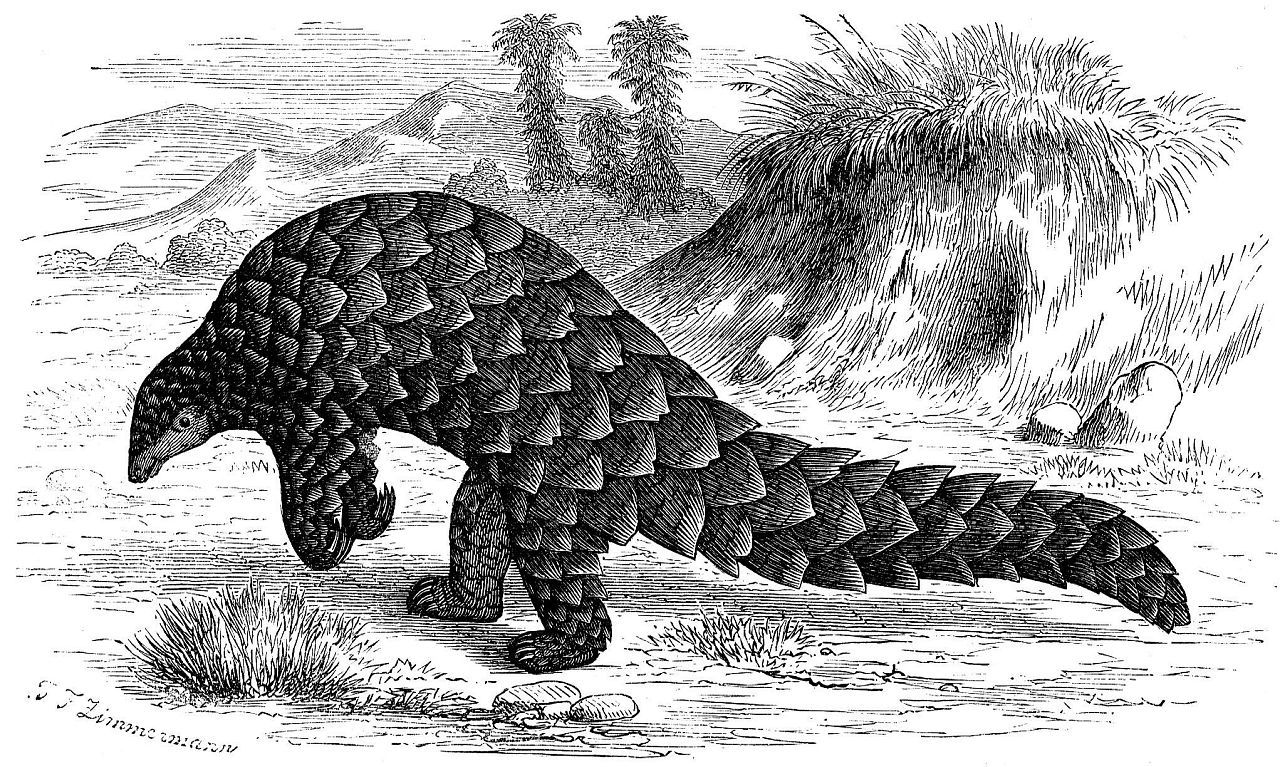
In the middle row there are 9 scales on the head, 13 on the back and 6 on the tail. Two rows of these horn formations also lie on the underside of the tail. Their color is yellowish-brown, the end of the tail is lighter and often bordered with an oblong yellow stripe. Naked parts dark brownish, eyes reddish brown. The end of the muzzle is black. Adult males reach approximately 80 cm in length, of which the tail is 30 cm. The steppe lizard lives mainly in eastern and southern Africa, but is also found in western.
"Father, covered with bark," as the inhabitants of Kordofan call the steppe lizard, finds sufficient food and desired solitude in the termite-rich steppes of Africa. Burrows in the ground serve as dwellings; however, it never burrows as deep as the aardvark. The steppe lizard is a nocturnal animal and appears only after dusk; he is not agile or fast, and also does not know how to defend himself from enemies. Ants, termites, grasshoppers, beetles make up its food. The only cub he gives birth to is born already fully covered with scales; however, the scales are still soft and poorly developed towards the end of the tail. Aboriginal people do not hunt this animal and therefore it is difficult to get it. One specimen brought to us, an adult male, was accidentally killed by a Turk when he climbed out of a hole. The Turk, extremely struck by the strange phenomenon, quickly delivered a terrible blow to the monster's shell with his saber, and saw with great amazement that this blow hardly had any effect. We found that a third of one of the scales had been cut off, and some of the others were somewhat damaged. The Arab accompanying the Turk killed the familiar creature with a single blow to the head and hung it in the form of a victory trophy on the horse of the owner, who kindly gave us his booty as a gift.
Subsequently, I saw this wonderful creature alive with a merchant in Khartoum, who fed him milk and white bread. The lizard was completely harmless, like the rest of his kind; you could do anything with him. During the day he lay curled up in some corner, at night he went out and ate, often dipping his tongue into milk. According to Geiglin's instructions, the steppe lizard lives in a hole dug by itself, which, however, is less deep than the hole of the aardvark. Here he sleeps during the day, curled up, and hides his head under his tail. It usually walks on its hind legs without touching the ground with a very mobile tail and can lift its upper body almost vertically. Since he cannot flee from his enemies and is generally defenseless, he can only curl up in the event of an attack into a hard ball and thus surrender to the mercy of fate in the hope that a strong shell will protect him sufficiently from teeth and claws. Its food consists of various kinds ants, beetles and grasshoppers; according to the natives, however, he also eats millet.
Life of animals. - M.: State publishing house of geographical literature. A. Brem. 1958
Scaly - one of the detachments of the class of reptiles of the chordate type. This group of animals combines suborders: snakes, lizards and amphisbae (two-walkers). This is the most numerous order of reptiles, including more than 6000 species. The detachment is so named because the body of all its representatives is covered with horny scales or scutes. Representatives of scaly - cobra, gyurza, viper, gecko, monitor lizard, spindle, etc.
These are terrestrial vertebrates that appeared on Earth during evolution at the end of the Triassic period (more than 150 million years ago). Modern scaly reptiles are distributed almost everywhere on land, some - in the seas or fresh water (water snake, sea snakes, etc.). Scaly ones do not live in the Arctic and Antarctic, since they, like representatives of other orders of reptiles (crocodiles, turtles, beakheads), are cold-blooded. Scaly - predatory animals. Lizards feed mainly on invertebrates, and snakes on various vertebrates, less often on invertebrates.
Scaled reptiles have characteristics external and internal structure. As already mentioned, the body of these animals is covered with horny scales of various shapes, grains, and scutes. In some species, bone plates are located under them. The body of squamates is elongated, cylindrical in shape. Lizards have front and rear paired limbs and a tail, while snakes and amphisbaenas are devoid of limbs.
A characteristic sign of squamous is the movable connection of the square bone of the upper jaw with the cranium. Teeth are attached to the upper or inner surface of the jaws. There is a cloaca that looks like a transverse slit. Fertilization of scaly, like all reptiles, is internal. These animals lay eggs, which in most species are covered with a soft parchment-like shell and lack an inner protein shell.
Lizards are varied appearance and sizes. Lizards differ from snakes in having an eardrum and moving eyelids. Largest dimensions among lizards they have monitor lizards (gray and giant) that live in the deserts of the tropical zone. Their length can reach 3.5 m, and weight - 140 kg.
Snakes are legless scaly reptiles. They are able to swallow large prey (vertebrates) whole, thanks to the movably connected bones of the left and right parts of the jaws. Due to the fact that snakes lack eardrums, they are able to pick up sound waves from the ground. The transparent and motionless eyelids of snakes are fused with the surface of the eyes. Due to the presence of many vertebrae (up to 400) in the spine and the absence of a chest, the body of the snake is very mobile and flexible. In poisonous snakes, the front teeth of the upper jaw are large, they have channels or grooves through which the poison flows at the time of the bite of the victim. The poison is produced by modified salivary glands. The largest among poisonous snakes is the king cobra, reaching a length of 5.5 m, living in Southeast Asia. Bites of vipers, efas, common and steppe vipers, American rattlesnakes, and sea snakes are also dangerous for humans.
The value in nature is determined by the participation in the food chains of different biocenoses. The importance of the representatives of this detachment for humans is also great. They eat pest rodents and harmful invertebrates, in particular insects. For medical purposes, snake venom is obtained, from which a number of drugs are produced. Some scaly species are an object of fishing or breeding.
WORLD QUIZ
Goals:
1. expanding the horizons of children, their knowledge of the world around them, to reveal the importance of the rational use and protection of the natural environment;
2. education of ecological culture, respect for the environment, the desire to take care of it;
3. fostering a sense of responsibility for one's actions in relation to objects of nature;
(Three teams of six people each take part in the game).
During the classes:
1. Organizational moment.
There is a huge house on earth
Blue roof.
The sun lives in it
rain and thunder
Forest and sea surf.
Birds and flowers live in it,
Spring sound of the stream
You live in that bright house
And all your friends.
Wherever the roads lead
You will always be in it.
NATURE of native land
This house is called.
(L. Daineko)
Dear guys, today we will visit the wonderful world of nature: on the river, in the field, in the forest and in the clearing. We will visit animals, look into the kingdom of mushrooms. Interesting questions and fun games are waiting for you.
Let's split into 3 teams.
The jury will evaluate your knowledge during the team competition. Fans can also give their team an extra point for a correct answer, but they can also deprive their team of a point for bad behavior
I. First station. "Kingdom of Plants".
Leading. Our Earth is called the Green Planet. Who gave her a green outfit?
Trees and herbs, flowers and shrubs. They are all around us. In the far north and in the hot desert. High in the mountains, in the forest, in the meadow and near the water. Thousands of species, hundreds of thousands of names.
So on the road. The first station of our journey "Kingdom of Plants".
1st competition. Quiz "Know the plant."
– Each team listens carefully to their question.
1. What groups can all plants be divided into? (Coniferous and flowering).
2. Spring wreaths are woven from it, and when it fades, it scatters to all parts of the world. (Dandelion).
3. What trees are called evergreen? (Spruce, pine). Why?
4. What trees have white bark? (Birch, aspen).
5. What berry is red, white, yellow, black? (Currant).
6. Girls in love like to guess on this flower. (Chamomile).
7. What gas is needed for plant respiration? (Oxygen).
8. This is the very first flower that appears from under the snow. (Snowdrop).
9. What flower is called the queen of flowers? (Rose).
10. Which tree gives sweet juice? (Birch)
11. What is the name of the plant that burns?
12. Which trees have red leaves in autumn? (Maple, rowan).
13. What tree leaves flutter even without wind? (Aspen).
2nd competition. Who will make more words - nouns from the word NATURE. (Each team has a sheet and a pencil. Rod, feast, ode, gift, ar, time, hell, Herod, etc.). (each team has a piece of paper and a pen)
3rd competition. What leaves and fruits and on what tree do they grow?
1. Birch leaf - birch.
2. Linden leaf - ... lime
3. Maple leaf - ... maple
4. Spruce cone - ... spruce
5. Oak fruit - ... acorn
6. Oak leaf - .... oak
7. Aspen leaf - ... aspen
8. Willow leaf - ... willow
9. Pine cone - ... pine
10. The fruit of the apple tree is ... an apple
4th competition. The game "The Fourth Extra".
Delete the extra ones. Explain why?
1. Maple, mountain ash, spruce, tulip.
2. Birch, oak, wild rose, poplar.
3. Apple tree, currant, raspberry, mountain ash.
4. Aspen, linden, oak, spruce.
5. Pine, poplar, mountain ash, willow. Because …
6. Linden, aspen, maple, apple tree. Because …
7. Pear, plum, poplar, cherry. Because …
8. Strawberry, rose, lily of the valley, violet. Because …
In the meantime, the teams are working, we offer fans to solve riddles and bring an extra point to their team.
Puzzles
1. Russian beauty,
We all really like it.
She is white, slim
Clothes are green. (Birch).
2. They rush straight into the sky, up;
Take a close look:
Not birches, not aspens,
There are no leaves, there are needles. (Firs).
3. Here is a barrel with a hat,
Fell from the tree.
A year has passed - and a tree
He became small. (Acorn).
4. Bent the branches over the river,
The river looks sad. (Willow).
5. Quiet autumn will come,
It will become a marvelous tree:
Leaves are bright stars
Golden, hot. (Maple).
6. In the sultry summer it will bloom -
Calls the bees right away.
round leaves,
Light flowers.
Delicious, sweet is their nectar...
Does anyone recognize the tree? (Linden).
7. What kind of tree is
Treats snowmen?
Snow is standing, frosts are cracking,
Well, the berries are delicious. (Rowan).
II. Second station. "The Animal Kingdom".
1st competition. Quiz "Forest riddles".
1. What does a person do to save the animal world?
2. What are the names of animals whose body is covered with feathers? (Birds).
3. What are the names of animals whose body is covered with scales? (Fish).
4. What are the names of animals whose body is covered with wool? (Beasts).
5. Chicks, what bird does not know its mother? (Cuckoos).
6. Who travels through the air on a string? (Spider).
7. Who has a pantry on a bitch? (At the squirrel).
8. What is the thinnest thread in nature? (Web).
9. Why is hunting prohibited in spring? (In the spring, fur-bearing animals molt, which depreciates the value of the fur. In addition, the animals have cubs in the spring).
10. What bird is called "white-sided"? (Magpie)
11 There are lumberjacks on the rivers
In silver-brown coats
From trees, branches, clay
Build strong dams. (Beavers).
12. Little animal jumps:
Not a mouth, but a trap.
Will fall into a trap
Both a mosquito and a fly. (Frog).
13. He is in flight over the river,
This amazing plane.
He floats smooth over the water,
On the flower of his planting. (Dragonfly).
14. I carry a house on my back,
But I will not invite guests:
In my bone house
Place for only one. (Turtle).
15. A rope lies,
hissing cheat,
Taking it is dangerous -
Will bite. Clear? (Snake).
16. Waves carry to the shore
Parachute is not a parachute
He does not swim, he does not dive,
Just touch it - it burns. (Jellyfish).
2nd competition. "Funny Animals"
If you watch animals, you can see a lot of interesting and funny things. And now I invite the teams to portray the animals, so that everyone can guess - WHO IS IT?
1. Heron and frogs in the lake.
2. Lion and dog.
3. Crow and fox.
4. Masha and three bears.
III. Third station. "Kingdom of Mushrooms".
Leading. Guess the riddle and find out which station awaits us.
Along the path, along the path
We follow them into the forest.
If the place gets
Then we'll pick up a basket. (Mushrooms).
Among the gifts of nature, which our country is rich in, a significant place is occupied by mushrooms - a valuable food product. Gathering mushrooms, we spend a lot of time outdoors, inhale the aroma of the forest, admire the beauty of nature. This is a very useful and fun activity.
And now we're going mushroom hunting.
Do you like picking mushrooms?
1st competition. "In the forest clearing."
Now we will remember the rules for collecting mushrooms. Take a few minutes to discuss these rules with your team and decide who will be in charge. One person per team comes out and takes turns saying the rules.
2nd competition. Game "Collect mushrooms".
(Pictures of mushrooms are scattered on the field. One member from the team comes out).
– Who will collect more mushrooms. (Repeat several times).
– What groups can all mushrooms be divided into? (For edible and inedible).
Puzzles
1. Here are conspicuous in the grass
Multicolored hats.
Remember their name
But don't eat it raw! (Russula).
2. Very friendly guys
They live near the hemp ... (Honey mushrooms).
3. Where there are too many needles,
They are waiting for us ... (Oil).
4. Under the aspen, that mushroom, children,
In a bright red beret. (Boletus).
5. At the birches, look:
One here, three here! (Boletus).
6. The king of mushrooms lives in an oak forest.
Mom needs it for a roast. (Borovik, white).
3rd competition. "Collect a proverb."
Team members receive envelopes with the text of the proverb cut into words. At the signal of the leader, they must open the envelope and glue the proverb.
("Mushroom to fungus - you will pick up a basket").
The text of the proverb is presented to the jury, which evaluates the correctness and speed of the task.
IV. Fourth station. "Ecological".
– Guys, what is "ecology"?
Our planet is our home, and each of us is responsible for its future. But not all people remember this. Here, listen to a poem about grief - tourists who came to rest in the forest.
Walk. (S. Mikhalkov)
We arrived at the river
Sunday to spend
And a free place
Not to be found near the river!
They sit here and they sit there:
Sunbathing and eating
Rest as they wish
Hundreds of adults and children.
We walked along the coast
And they found a clearing.
But in a sunny meadow
Empty jars here and there
And, as if to spite us,
Even broken glass.
We walked along the coast
Found a new place.
But even here they sat before us;
They also drank, they also ate,
They burned a fire, they burned paper -
They messed up and left!
We passed, of course,
– Hey guys! - shouted Dima, -
Here's a place to go!
Spring water,
Wonderful view!
Lovely beach!
Unpack your luggage!
We swam, sunbathed,
They burned a fire.
They played football
Have fun as much as you can:
They drank kvass, ate sweets,
They sang songs in a round dance ...
Rest and leave!
And stayed in the meadow
At the extinguished fire:
Two broken glass bottles -
Two soaked bagels -
In a word, a mountain of garbage.
We arrived at the river
Monday to spend
Only a clean place
We didn't find it near the river!
– Why do you think the tourists didn't find a clean place on Monday?
– What would you do if you were these tourists?
– What harm do people cause by such behavior?
– What other sources of environmental pollution do you know? (Children list).
Competition "Rules of friends of nature".
– Remember the rules of friends of nature? (They call the rules in turn.)
Well done boys. I hope that when you relax in nature, you will remember how to behave so as not to harm nature.
– And so our journey came to an end. wonderful world NATURE.
I give the floor for summing up to our jury. (Team awards)
Scenario of the quiz "Forest Kingdom"
Leading:
Good afternoon, dear first graders! Today we will go on a journey.
And where we will go today, you will find out if you guess the riddle.
The hero stands rich, treats all the guys:
Vanya - strawberries, Tanechka - blueberries,
Mashenka - a nut, Petya - a russula. (Forest)
Yes, we will go to the forest. What is a forest? One day the artist decided to paint a forest. He set to work, and soon very beautiful trees appeared on a sheet of paper. The artist was very pleased. He went to bed. Waking up in the morning, he saw that the forest withered, all the trees withered. And next to the picture was some old man - Lesovichok. He said, "Forest is not only trees."
1 contest
Put the pictures together and find out what is in the forest, except for the trees.
Fan competition.
(For each correct answer 1 point for the team).
B. Which fish does not have scales. (catfish).
Q. What is the largest bird? (Ostrich).
G. The woodcutter cut down an aspen for lunch and for the dam. (beaver).
D. Black climbs into the bath, and red comes out of the bath. (Cancer).
E. Is this our old friend, he lives on the roof of the house? (stork).
G. Breathes and grows, but cannot walk. (Plant).
Z. What kind of fish looks like a snake? (acne).
Leading reads the decree:
To all my faithful servants, to everyone who cares about the preservation of my wealth: so that mighty forests make noise, so that birds and animals live in the forests, and small insects, so that fish are in abundance in my rivers and my lakes. A deep bow to all of you and my invitation to the festive KVN to the forest king.
2 competition - Team greeting
3rd competition - "Experienced tourists"
Leading: Camping, campfire, tent - isn't it wonderful ?! But being a tourist is not easy, you need to know and be able to do a lot. But you know how to pack a backpack, collect only the most necessary things for a hike? We will check this now. Each team receives a set of cards and will choose only those items that are needed for the trip. You get points for correct answers.
Words on cards: compass, textbooks, soap, towel, mug, cup, TV, alarm clock, garbage bag, canned food, umbrella, cat, rollers, skates, toothpaste, bowl, bowler hat, box of chocolates, iron, tennis rackets.
4 competition - "Rules of friends of nature"
Leading: “And before we set off, let's remember the rules of behavior in the forest. What can not be done in the forest kingdom? (Teams take turns calling the rules of conduct and get a point for the correct answer)
The facilitator reads the poem:
If you came to the forest to walk, breathe fresh air,
Run, jump and play, just mind you, don't forget
That in the forest you can not make noise, even sing very loudly.
The little animals will be frightened, they will run away from the forest edge.
Do not break oak branches, and remember more often:
Clean up trash from grass! In vain do not tear the flowers!
Do not shoot from the slingshot, You did not come to kill!
Butterflies let them fly, well, who do they interfere with?
Here you do not need to catch everyone, Stomp, clap, beat with a stick.
You are just a guest in the forest, here the owner is an oak and an elk.
Take care of their peace, because they are not our enemies.
Leading:
And now on the road!!! And on the way we met different plants. Guess what plants we met on the way to the forest,
Competition 5 - "Riddles"
Nettle: Don't touch the plant! It hurts like fire.
Plantain: The traveler often hurts his leg
Here is the doctor on the road.
Lily of the valley: White peas on a green stem
Chamomile: Sisters are standing around: yellow eyes, white cilia.
Dandelion: It burned in the dewy grass, then faded, went out and turned into fluff.
Snowdrop: Breaking through the snow,
Amazing sprout.
The very first, the most tender,
The most velvety flower!
Burdock: Whoever touches,
It clings to it.
Affectionate and prickly,
Needles all around
Bell: Now purple, then blue,
He met you at the edge.
They gave him a very sonorous name,
But only he can hardly call
Rosehip: Wild rose is called how the medicine is used.
Forget-me-not: This blue flower
Reminds us of you
About the sky - pure, pure,
And the sun is radiant!
Leading:
If I pick a flower, if you pick a flower
If everyone: both I and you, if we all pick flowers
All glades will be empty, and there will be no beauty!
Who, besides plants, lives in the forest?
6 competition
In the names of which fairy tales is there an animal? List them, for each name you will get a point. Be careful, don't repeat yourself.
7 competition: Competition of captains
In what kind of dwelling does the animal live?
WOLF MOLE BEAR BIRD HENS
FOX DOG BEaver HORSE SQUIRREL
Competition 8: Guess the illustration of birds (on the picture screen)
9 competition
Make as many words as you can from the word NATURE.
Leading:
Here our journey has come to an end.
Why are we friends with the forest,
Why do people need it?
Yes, without a forest, without plants, we simply will not survive. Therefore, each of us must take care of nature, take care of it, and not hurt it ...
…You, man, loving nature,
Feel sorry for her sometimes.
On fun trips
Do not trample its fields!
Don't burn it down
And don't go to the bottom.
And remember the simple truth:
We are many, but she is one!
The floor is given to the jury. Winner's reward ceremony.
Game with fans "Birds have arrived."
Birds flew in - pigeons, tits, flies and swifts.
Birds arrived - pigeons, tits, storks, crows, jackdaws, pasta.
Birds arrived - pigeons, tits, lapwings, siskins, gulls and swifts, mosquitoes, cuckoos, sweet cheesecakes.
Birds flew in - pigeons, tits, jackdaws and swifts, lapwings, hedgehogs, storks, cuckoos, even owls, buns, swans and ducks,
And thanks for the joke!
(Children clap their hands if they hear the names of birds)
TEAM NAME, MOTTO:
Our team:
Our motto:
Take care of your planet
After all, there is no other!
How many erudite people are here,
Nowhere for an apple to fall.
It will be hard for us to win
Let's not hit the face in the dirt.
Rivals, rivals
We welcome you
Do you want to be the first
But only after us!
We are in KVN, we are playing in KVN for the first time,
But we won't break, we'll overcome everything,
Let's show the highest class!
Moderator: Hello dear friends! Today we have a holiday dedicated to nature. I know that you love nature, protect it and know many of its secrets.
Leading: - And in order to comprehend her innermost secrets and learn more about her, we will hold a quiz.
RELAY RACE.
The competition involves 1 person from each class. Stepping forward one by one, the children (at each step) say the name of the tree (shrub). Names are NOT to be repeated. The winner is the one who names more trees without delay and error.
COMPETITION OF FUNNY ARTISTS.
One participant from each class is called. On two boards (sheets of paper) everyone draws a blindfolded cat. The jury evaluates the "mastery" of the artists.
PUZZLES. 1. In the middle of the courtyard is a golden head.
(Sunflower) 1. Not heat, not fire, but if you take it in your hands, it will scorch.
(Nettle)
2. Not a beast, not a bird, but a nose - like a knitting needle.
(Mosquito) 2. Moved by the flower
All four petals.
I wanted to rip it off
He fluttered and flew away.
(Butterfly)
3. What kind of forest animal is this?
I stood up like a column under a pine tree
And stands among the grass -
Ears are larger than the head.
(Hare) 3. Small, reddish,
The tail is beautiful and shaggy.
Lives on a tree
And gnaws nuts.
(Squirrel)
GREAT BAG.
In the bag are various fruits (carrots, apples, pears, etc.)
Team members determine by touch what it is.
FOURTH EXTRA.
Participants receive envelopes with sets of drawings, three of which can be combined into one group according to some common feature for them. Thus, it should be noted among them the 4th superfluous, for example, MUSHROOMS: boletus, chanterelles, russula, fly agaric;
TREES: birch, oak, maple and spruce.
Beasts: domestic and wild.
MUSICAL WORKOUT.
"Singing Nature"
Teams take turns singing songs about nature: about birds, forests, plants, animals.
"WHO IS FASTER?" (crossword).
Representatives of each team must solve one crossword puzzle. Crossword questions:
1. Who wanders in the forest in the cold winter, angry, hungry? (Wolf)
2. Itself is light, and the tail is rich, from branch to branch jump-jump, nut after nut click-click. (Squirrel)
3. Thought it was a cat. Shouted: "Shoot!"
It turned out to be ... (Lynx)
4. The tail is fluffy, the fur is golden.
He lives in the forest, steals chickens in the village. (Fox)
COMPETITION OF FANS.
While the representatives of the teams are solving crossword puzzles, the fans of both teams are asked questions in turn.
*If a question is not answered promptly, fans of the other team are allowed to answer.
QUESTIONS:
Who wrote the fairy tale "The Ugly Duckling"? (G.H. Andersen)
What birds do little swans look like? (On ducklings)
What is the largest bird in the world? (Ostrich)
Which bird flies the highest? (Eagle)
Which bird has the longest tongue? (Woodpecker, 15 cm)
What bird has a very long tail? (Magpie)
Host: Nature is the wealth of mankind.
It must be protected like human life.
Do you know the RULES OF BEHAVIOR IN NATURE?
Children speak up. The leader shows the prohibition signs:
1. Do not knock down mushrooms, even inedible ones.
2. Do not destroy bird nests.
3. Do not make noise in the forest, in the park.
4. Do not make a fire in the forest.
5. Don't leave trash in the forest.
6. Do not ruin the anthill.
Host: Our quiz has come to an end. But we are sure that this meeting will not be in vain. You will become true defenders of nature, love our nature, our land even more!
All participants of the quiz are awarded with commemorative medals.
They live in warm and hot countries. Lizards and snakes live in our country. You can see it only in the warm season. In winter, they sleep in burrows under tree roots. They live in warm and hot countries. Lizards and snakes live in our country. You can see it only in the warm season. In winter, they sleep in burrows under tree roots.
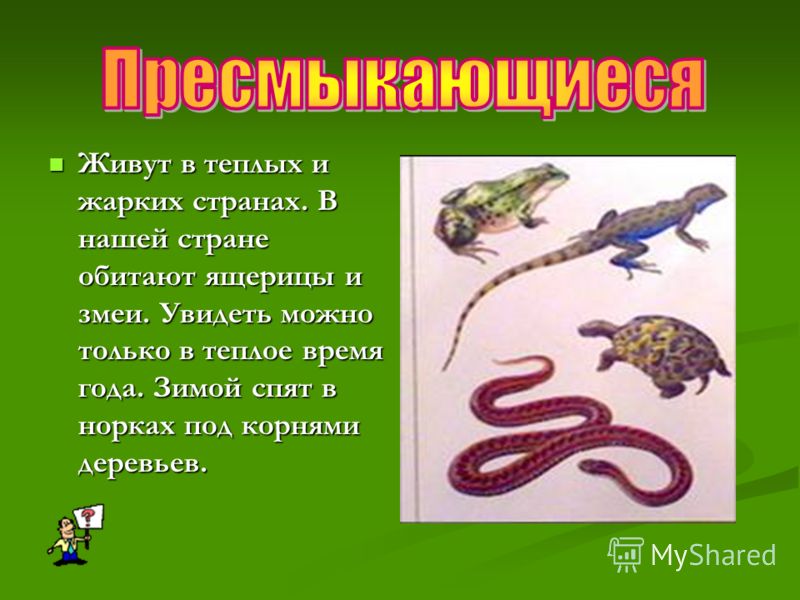
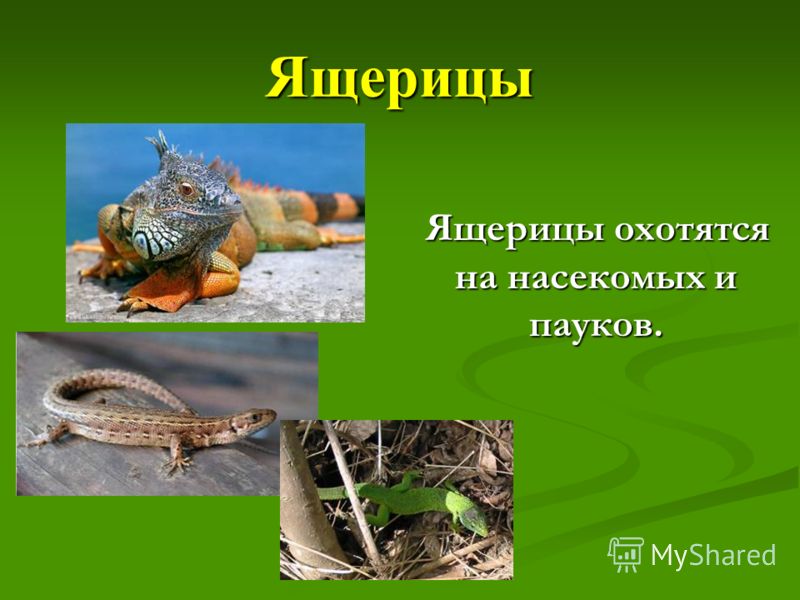
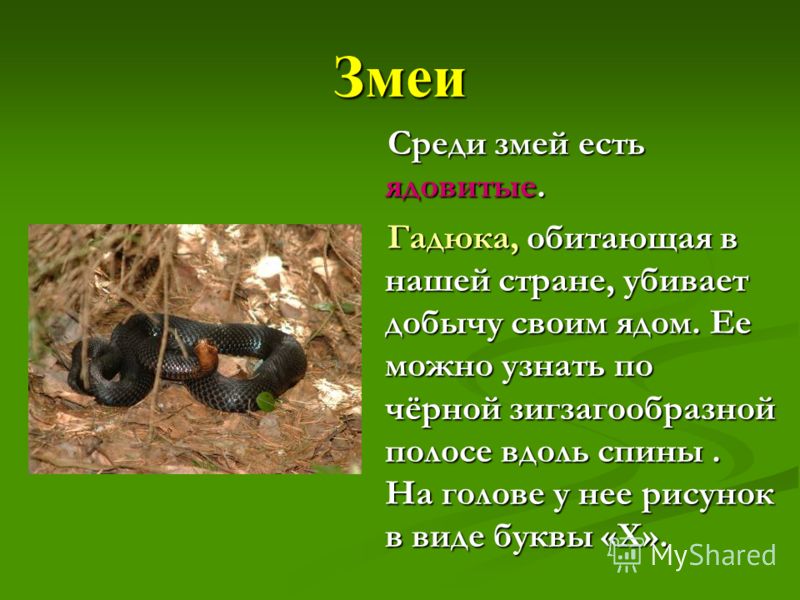
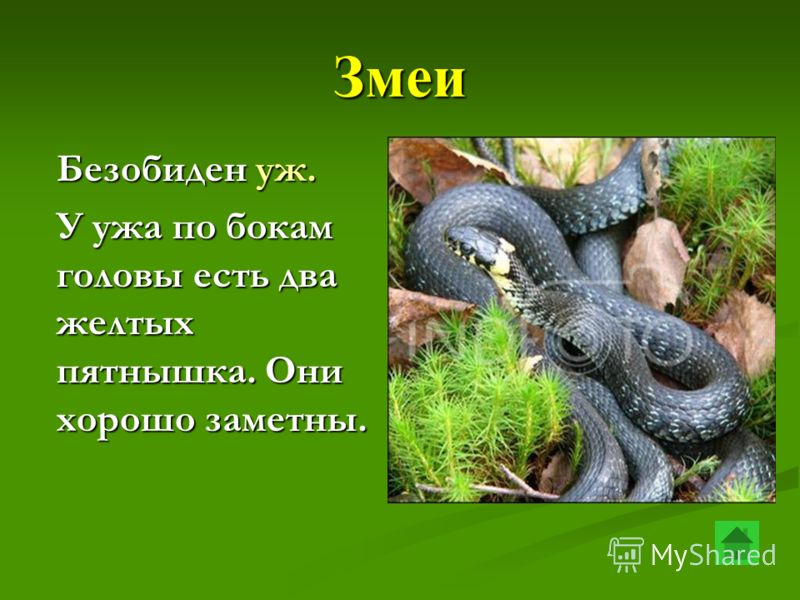
Animals whose body is covered with feathers. The forelimbs are turned into wings. Animals whose body is covered with feathers. The forelimbs are turned into wings. Body temperature does not depend on the environment. Body temperature does not depend on the environment.
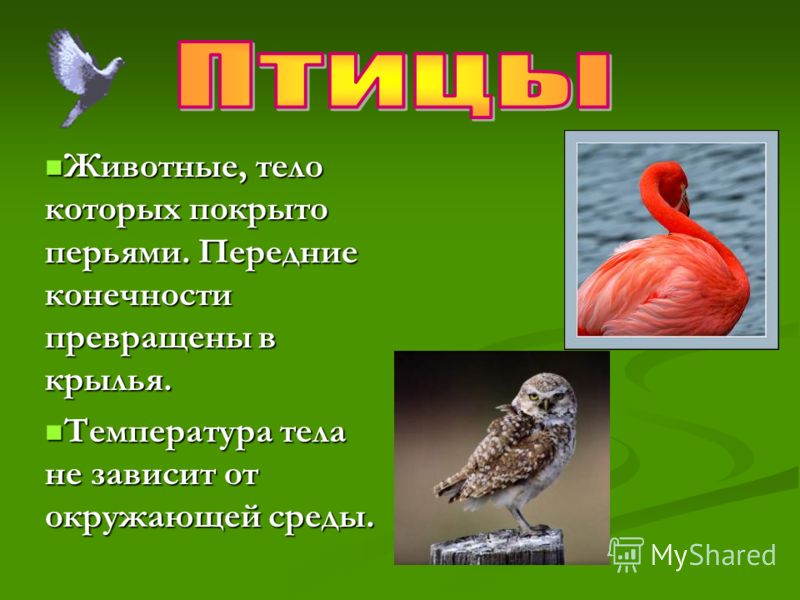
Feathers of birds COVERING feathers, like the scales of a fish, cover the entire body. Integumentary feathers save waterfowl from getting wet. DOWN feathers, soft and fluffy, are under the integumentary. The flight feathers of the wings and the tail feathers play a major role in flight.
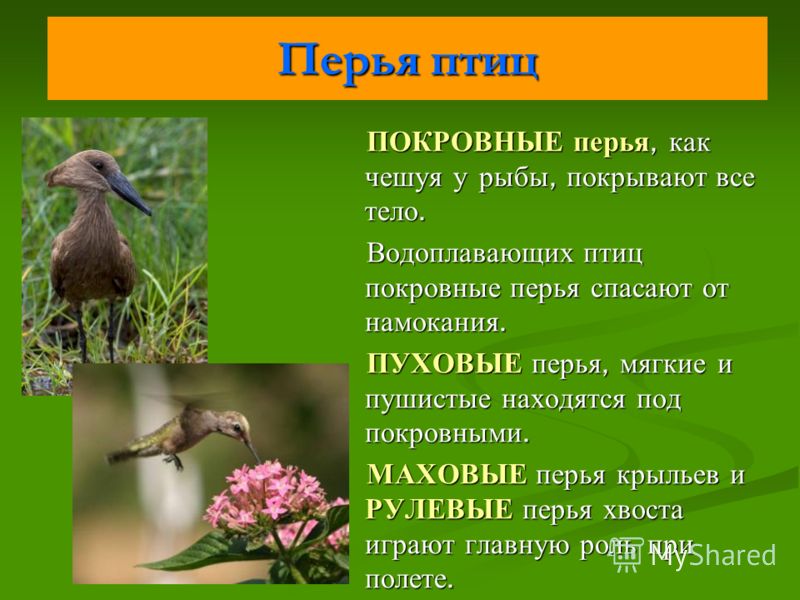
Feeding birds GRAIN-eating birds have a short and strong beak. With it, they break hard seeds. In insectivorous birds, thin and sharp. It is convenient for them to get insects out of cracks. Legs with sharp, tenacious claws. Birds of prey have a hooked beak, powerful legs with sharp claws.
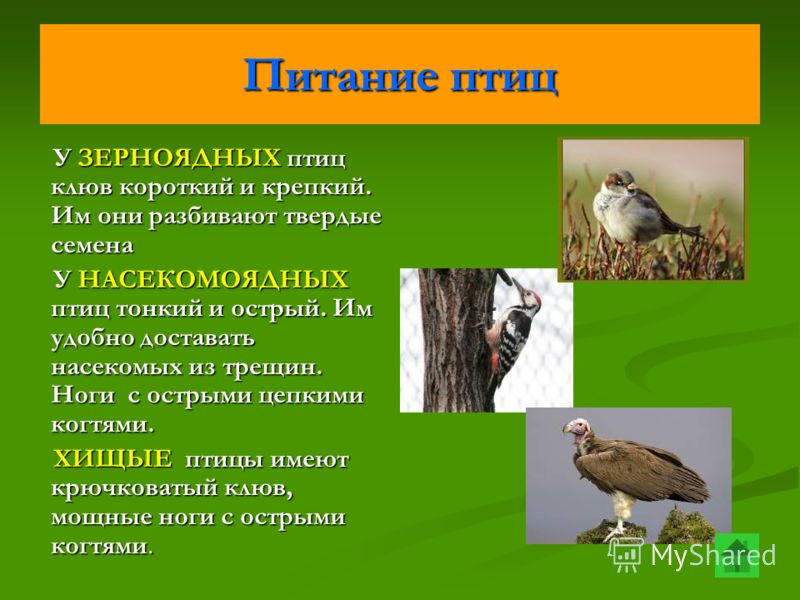
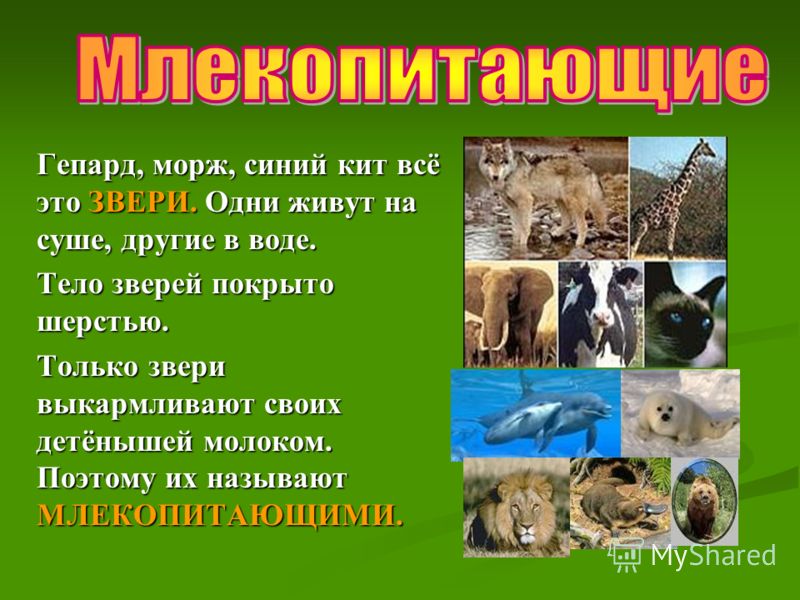
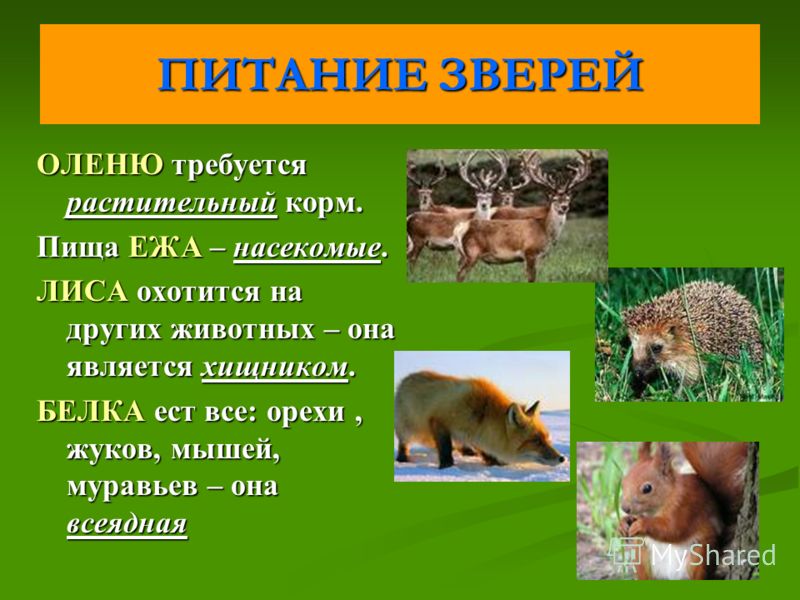
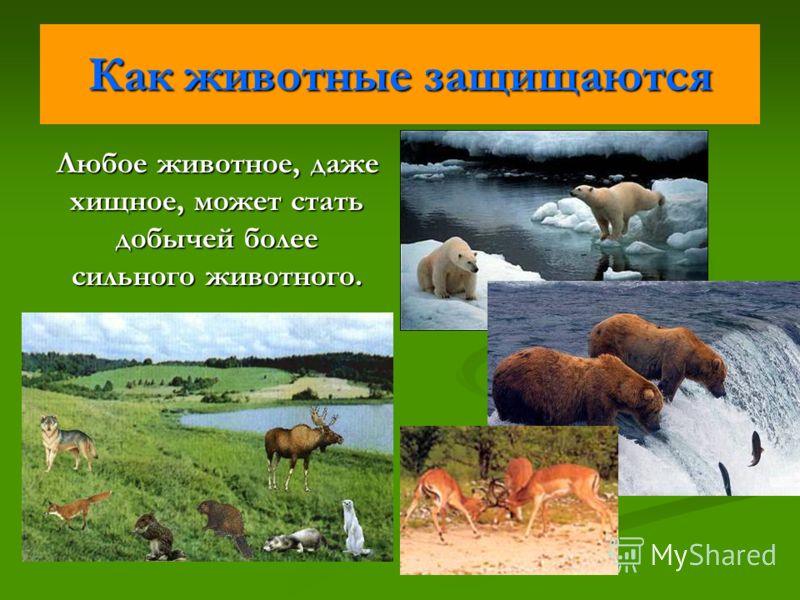
Ways of protection Many animals are saved by FLIGHT. Many animals are fleeing. Others FLY OFF, FLY AWAY, HIDE IN MINKS. Others FLY OFF, FLY AWAY, HIDE IN MINKS. Hedgehog rescued by sharp needles Hedgehog rescued by sharp needles TURTLE - a strong shell. TURTLE - durable shell.
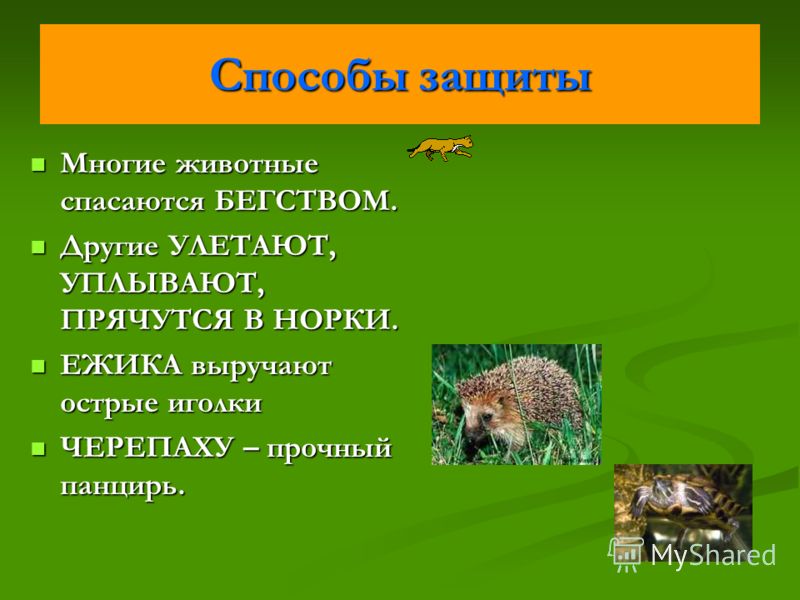
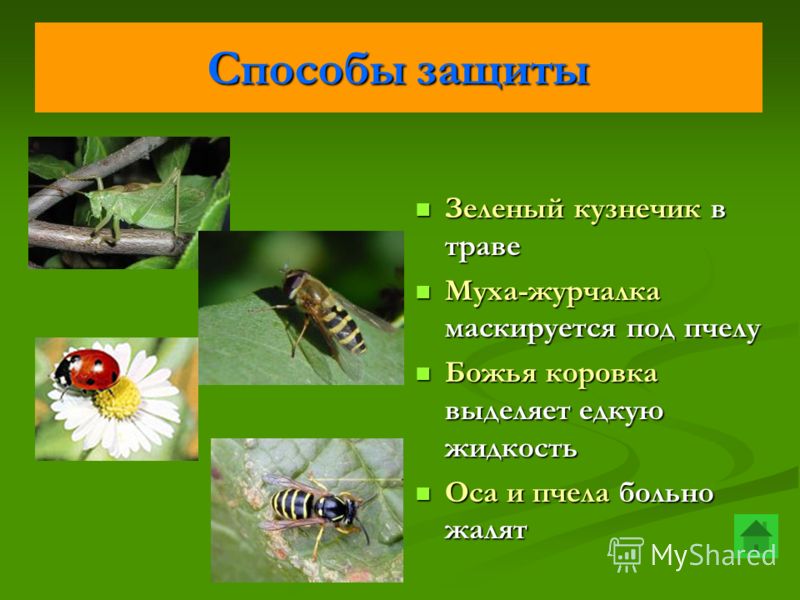
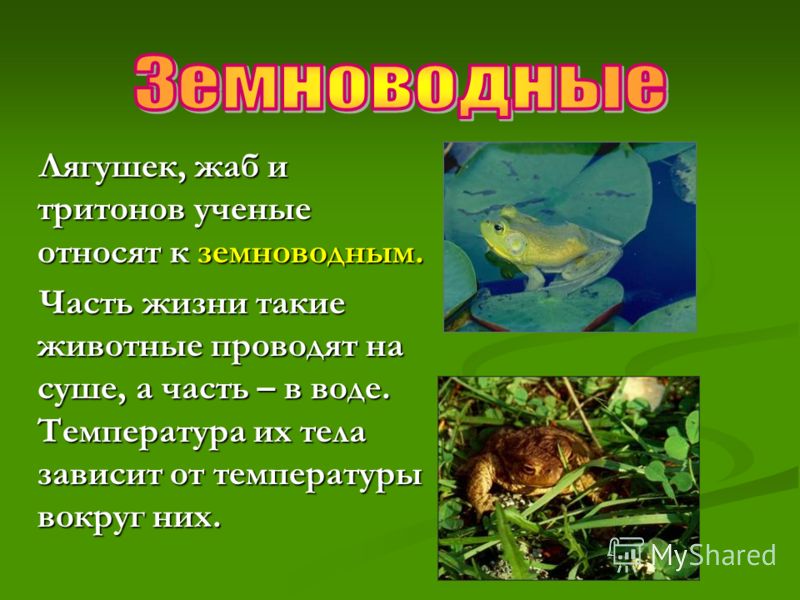
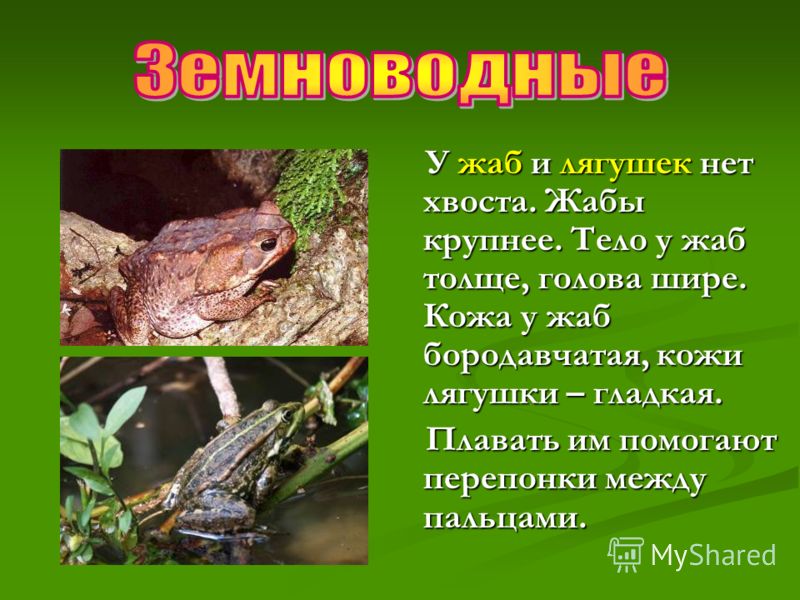
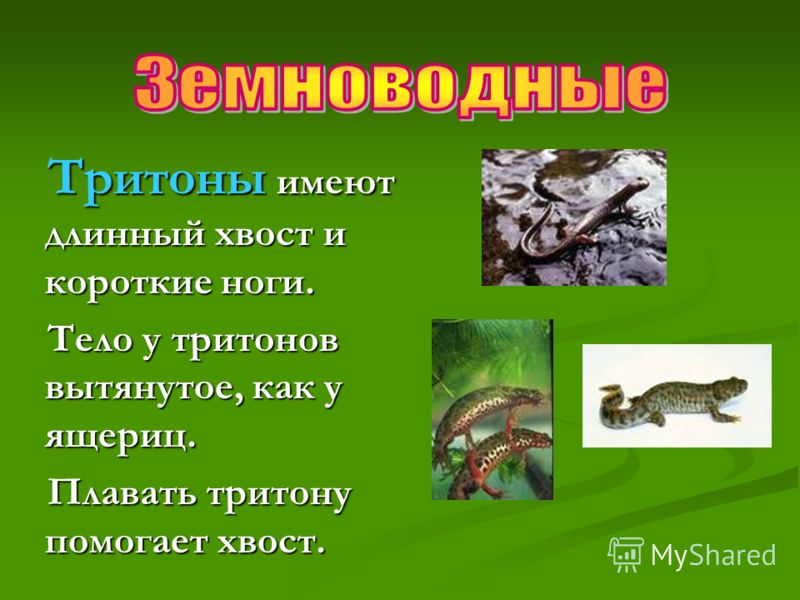
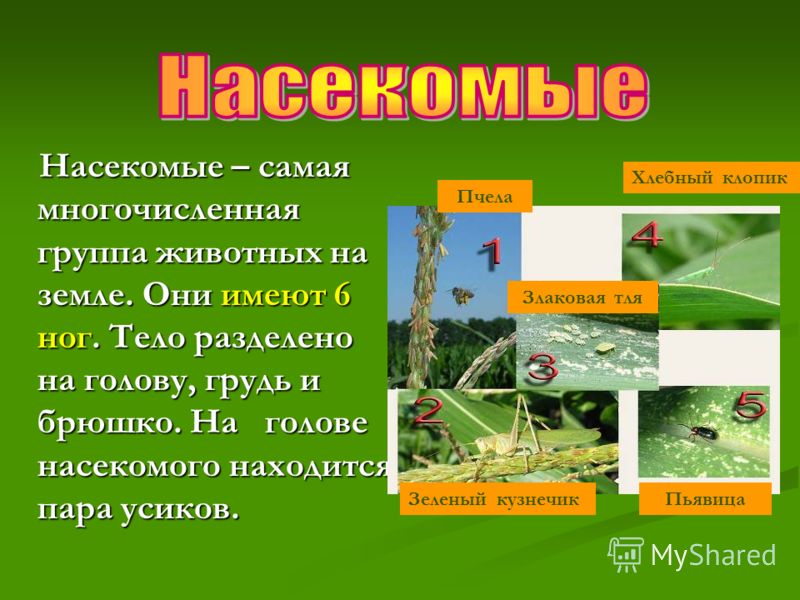
Herbivorous insects. Bumblebees and many butterflies feed on flower nectar and pollen. Bumblebees and many butterflies feed on flower nectar and pollen. Some beetles eat wood. Some beetles eat wood. Aphids suck the juices from the leaves of plants. Aphids suck the juices from the leaves of plants.
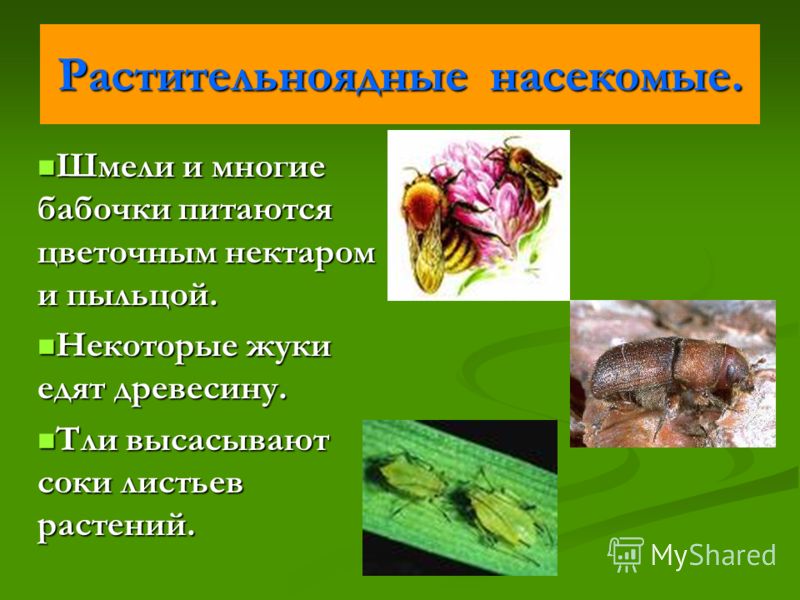
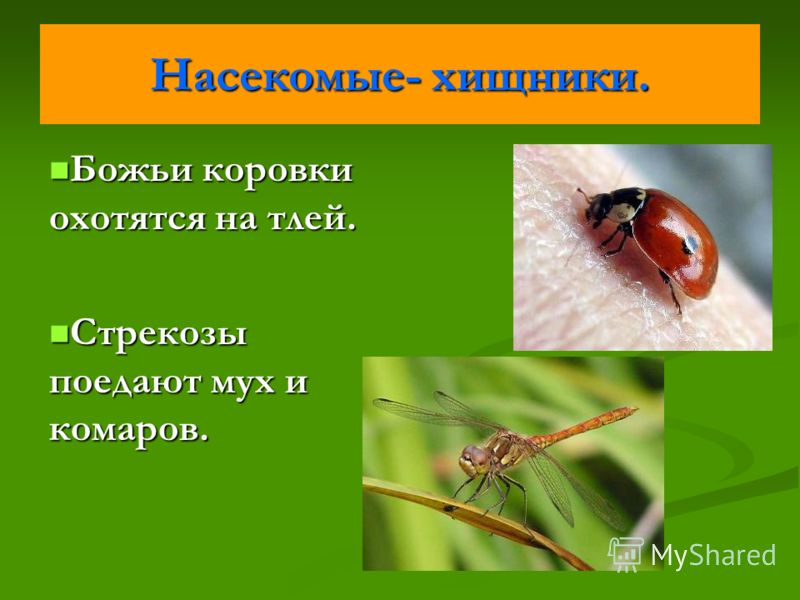
Omnivorous Insects Red forest ants eat everything: living and dead insects, fruit juices, flower nectar, sugary secretions of aphids. Red forest ants eat everything: living and dead insects, fruit juices, flower nectar, sugary secretions of aphids. Ants are the most important defenders of the forest from leaf-eating caterpillars and beetles.
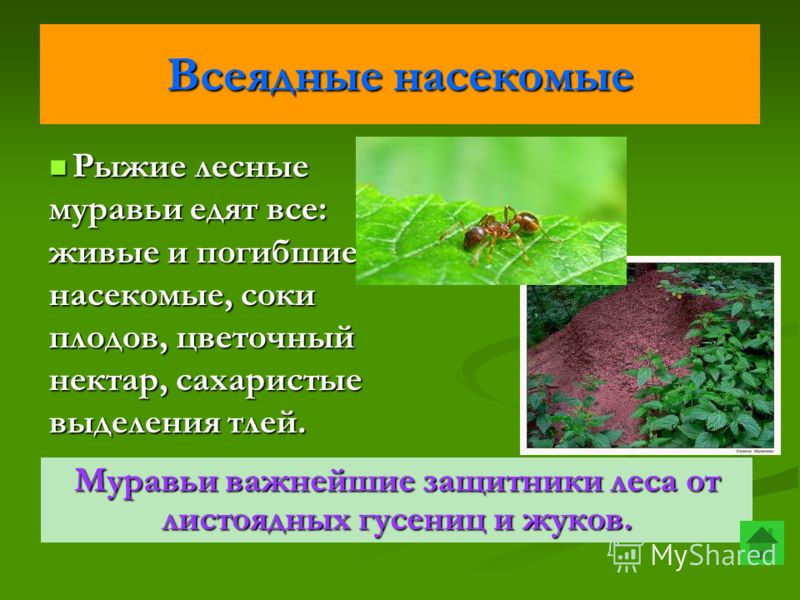
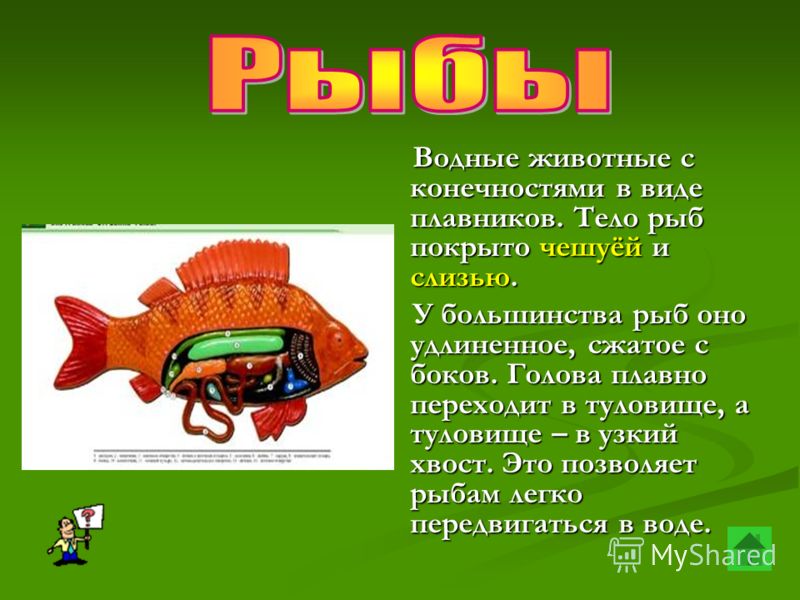
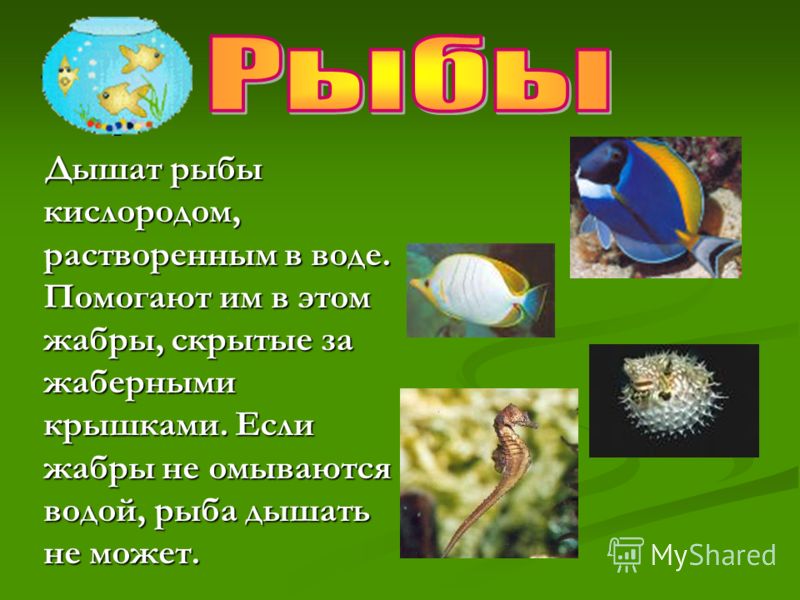
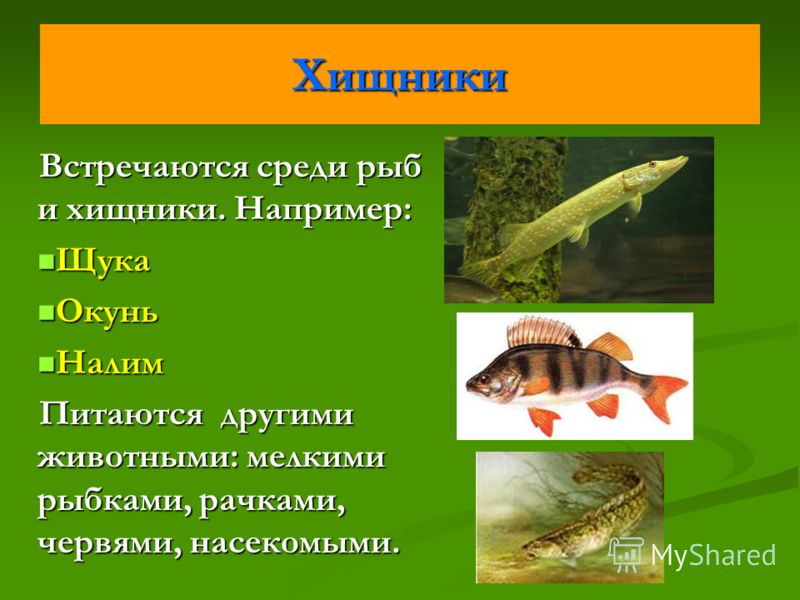
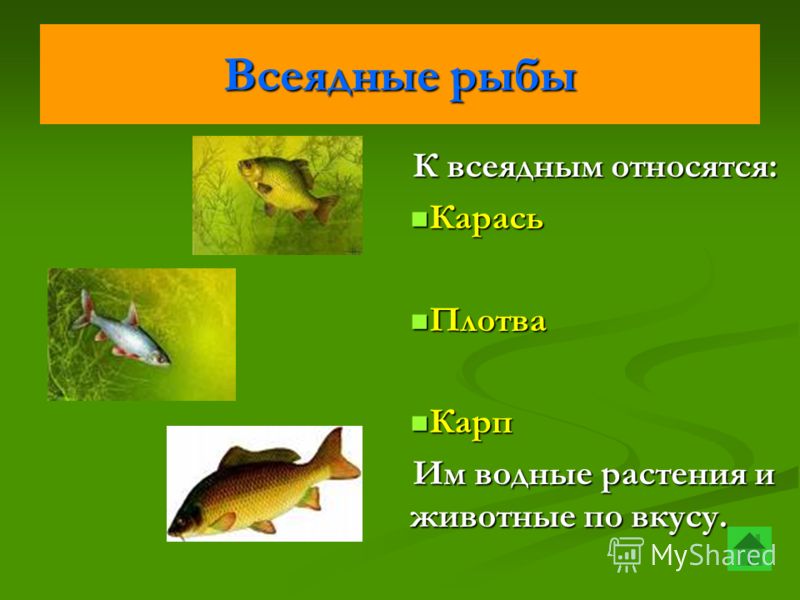
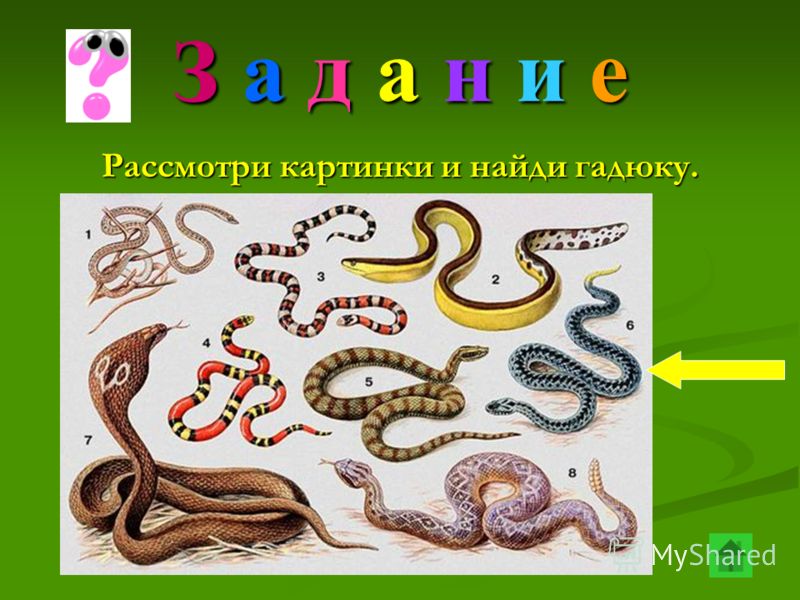
Scrabble quiz 1. Who wears the house? 1. Who wears the house? 2. Why does an elephant need a trunk? 3. How many legs do insects have. 4. What insect tastes with legs? 5. Who has a poisonous sting on his tail? 6. Which bird swims like a fish? 7. What is the tallest animal? 8. What animal can change its color?
